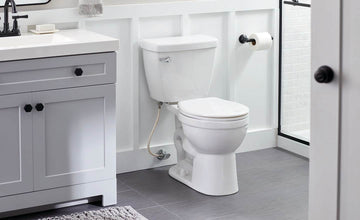In recent years, innovative ceramic toilet technology has been making waves in the restroom industry. This cutting-edge technology is transforming the way we perceive and use toilets, offering enhanced functionality, efficiency, and sustainability. With a focus on quality assurance, industry professionals are keenly observing these developments to ensure they meet the stringent standards required for public and private use.
This article delves into the intricacies of innovative ceramic toilet technology, exploring how it is reshaping the restroom experience for users worldwide. By examining the key features and benefits, this comprehensive guide aims to provide valuable insights for industry QA experts and bathroom technology enthusiasts alike.

The Evolution of Ceramic Toilets
The history of ceramic toilets is a testament to human ingenuity and the relentless pursuit of comfort and hygiene. From the earliest chamber pots to today's state-of-the-art designs, the evolution of toilets has been marked by significant technological advancements. Ceramic toilets, in particular, have become a staple in modern bathrooms due to their durability, ease of cleaning, and aesthetic appeal.
As technology continues to advance, so too does the functionality of ceramic toilets. The integration of smart features, water-saving mechanisms, and eco-friendly materials is driving the next wave of innovation in this essential household fixture.
Key Features of Innovative Ceramic Toilet Technology
Innovative ceramic toilet technology boasts a range of features that set it apart from traditional designs. These advancements not only enhance the user experience but also contribute to environmental sustainability and operational efficiency.
Smart Flushing Systems
One of the standout features of modern ceramic toilets is the smart flushing system. These systems use sensors to detect the optimal amount of water needed for each flush, reducing water wastage without compromising on performance. This technology is particularly beneficial in areas with water scarcity, promoting responsible usage and conservation.
Self-Cleaning Surfaces
The introduction of self-cleaning surfaces has revolutionized toilet maintenance. These surfaces are coated with a special glaze that prevents the buildup of bacteria and stains, ensuring a hygienic and low-maintenance experience for users. This innovation is especially valuable in commercial restrooms, where cleanliness is paramount.
Eco-Friendly Materials
Sustainability is at the forefront of innovative ceramic toilet technology. Manufacturers are increasingly using eco-friendly materials that minimize environmental impact during production and disposal. These materials not only enhance the durability of the toilets but also align with global efforts to promote green practices.
Impact on Industry QA
The rise of innovative ceramic toilet technology presents unique challenges and opportunities for industry QA professionals. Ensuring that these advanced toilets meet the necessary standards requires rigorous testing and evaluation. From verifying the efficacy of smart features to assessing the durability of eco-friendly materials, QA experts play a crucial role in the successful implementation of these technologies.
Moreover, the adoption of these innovations can lead to increased customer satisfaction and brand loyalty. By prioritizing quality assurance, companies can differentiate themselves in a competitive market and build a reputation for excellence.
Future Trends in Bathroom Technology
As we look to the future, the potential of innovative ceramic toilet technology appears limitless. Emerging trends such as IoT integration, personalized user settings, and advanced water recycling systems are poised to redefine the bathroom experience.
Incorporating IoT technology into toilets allows for seamless connectivity and remote monitoring, enabling users to customize their experience and track usage patterns. Personalized user settings offer a tailored experience, catering to individual preferences and promoting comfort.
Advanced water recycling systems are another promising development. These systems treat and reuse wastewater, significantly reducing water consumption and promoting sustainability. By embracing these trends, the restroom industry can contribute to a more sustainable and efficient future.
For further insights into portable toilet innovations, explore how they are revolutionizing the industry.
Conclusion
The advent of innovative ceramic toilet technology marks a new era in restroom design and functionality. With smart features, eco-friendly materials, and enhanced performance, these toilets are setting new standards in the industry. For QA professionals, staying abreast of these developments is essential to ensure quality and reliability.
By embracing these advancements, the restroom industry can continue to evolve, offering users a superior and sustainable bathroom experience. For more on innovative toilet designs, explore the article on innovative toilet designs.

FAQs
What is innovative ceramic toilet technology?
Innovative ceramic toilet technology refers to the use of advanced features and materials in the design and manufacturing of ceramic toilets, enhancing their functionality, efficiency, and sustainability.
How do smart flushing systems work?
Smart flushing systems use sensors to optimize the amount of water used for each flush, reducing waste and conserving water without compromising performance.
Why is eco-friendly material important in toilet manufacturing?
Eco-friendly materials reduce the environmental impact of toilet production and disposal, aligning with global sustainability efforts and promoting responsible consumption.
This article contains affiliate links. We may earn a commission at no extra cost to you.






